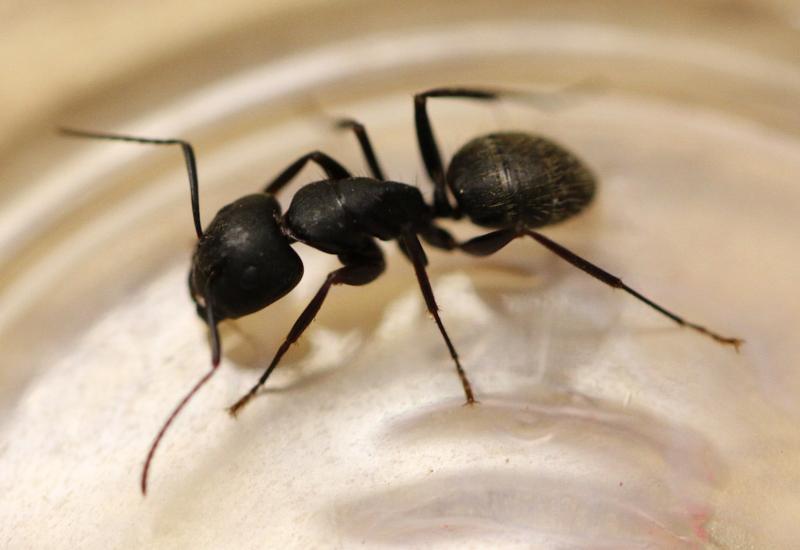With the continued moisture and warmer temperatures, carpenter ants have become a more common appearance in South Dakota. Although most reports have been around the Black Hills, carpenter ants can show up throughout the state. Similar to termites, this insect can be a structural pest, causing damage to homes and other buildings. It is important to identify and treat carpenter ants early to prevent any potential damage.
It is important to understand that, unlike termites, carpenter ants do not eat wood. However, they will burrow through and displace wood as they build their colonies. One of the main signs of carpenter ant activity is seeing piles of wood dust showing up near dead trees or wooden structures. Carpenter ants prefer to nest in wood that has been softened by moisture. Such places include tree stumps, rotting logs, and damp wood in and around buildings.
Profile

Carpenter ants are some of the largest ants in South Dakota, ranging in size from 3/8 to 5/8 inch long. They have dark-colored bodies that are either uniformly black or black and red. Carpenter ants have a uniquely shaped thorax (body segment directly behind the head) as well. Most ants have an indentation on the top of the thorax, whereas on carpenter ants, the top of the thorax is smooth and even (Figure 1). Carpenter ants also have only one node (or peak) on the pedicel (the thin segment connecting the thorax and abdomen). These features may be difficult to see without the assistance of a hand lens or microscope.
Management
The best management for carpenter ants is to prevent an infestation from occurring in the first place. Allow good air circulation in homes and other buildings to prevent moisture build up. If you have wood with water damage, replace it if possible. Make sure to remove rotting tree stumps, logs, or wood piles from around buildings. Carpenter ants often migrate indoors from these areas, so it is best to keep them far away from the exterior walls. Also, check your home for any tree branches or other natural or artificial structures that can act as a bridge between a carpenter ant nest and your home. These bridges may be reaching an upper story of the structure. Keep in mind that seeing only a few carpenter ants indoors does not necessarily mean that their nest is also indoors.
If you suspect a carpenter ant infestation, immediate treatment is recommended. One option is to use perimeter sprays which form an insecticide barrier that kills the ants on contact. This will prevent accidental invasions and also limit the ants from making it indoors. Another option is setting out poison ant baits, either granular or liquid, to eliminate the source of the infestation. Ants not only consume the bait, but also take it back to their nest and feed it to the rest of the colony. There are a variety of alternative methods such as mixing equal parts of sugar and either baking soda or boric acid to use as poison bait or sprinkling diatomaceous earth near the nest to kill ants on contact. For severe infestations, you may consider hiring a professional pest control company to evaluate and treat the situation.
If you have questions or concerns regarding carpenter ants, please contact your nearest SDSU Extension entomologist for more information.


